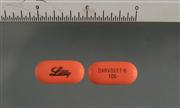Prescription Pain Relievers
 What are the street names/slang terms for Prescription Pain Relievers?
What are the street names/slang terms for Prescription Pain Relievers?
Codeine, OxyContin, Percocet and Vicodin.
What are Prescription Pain Relievers?
These are opioids, or narcotics.
What do they look like?
Tablets and capsules.
How are they used?
Medically, they are prescribed as analgesics, to treat pain. When abused, they are swallowed or injected.
What are their short-term effects?
Relief from pain. In some people, prescription pain relievers also cause euphoria or feelings of well being by affecting the brain regions that mediate pleasure. This is why they are abused. Other effects include drowsiness, constipation and slowed breathing. Taking a large single dose of prescription pain relievers can cause severe respiratory depression that can lead to death. Use of prescription pain relievers with other substances that depress the central nervous system, such as alcohol, antihistamines, barbiturates, benzodiazepines, or general anesthetics, increases the risk of life-threatening respiratory depression.
What are their long-term effects?
Taken exactly as prescribed, pain relievers can manage pain effectively. But chronic use or abuse of opioids can result in physical dependence and addiction. Dependence means that the body adapts to the presence of the drug, and withdrawal symptoms occur if use is reduced or stopped. Symptoms of withdrawal include: restlessness, muscle and bone pain, insomnia, diarrhea, vomiting, and cold flashes with goose bumps ("cold turkey"). Tolerance to the drugs' effects also occurs with long-term use, so users must take higher doses to achieve the same or similar effects as experienced initially. Addiction is a chronic, relapsing disorder characterized by compulsive drug seeking and use.
What is their federal classification?
Schedule I
Source
National Institute on Drug Abuse